

Venezuela Offshore
Cariaco Geographic Basin
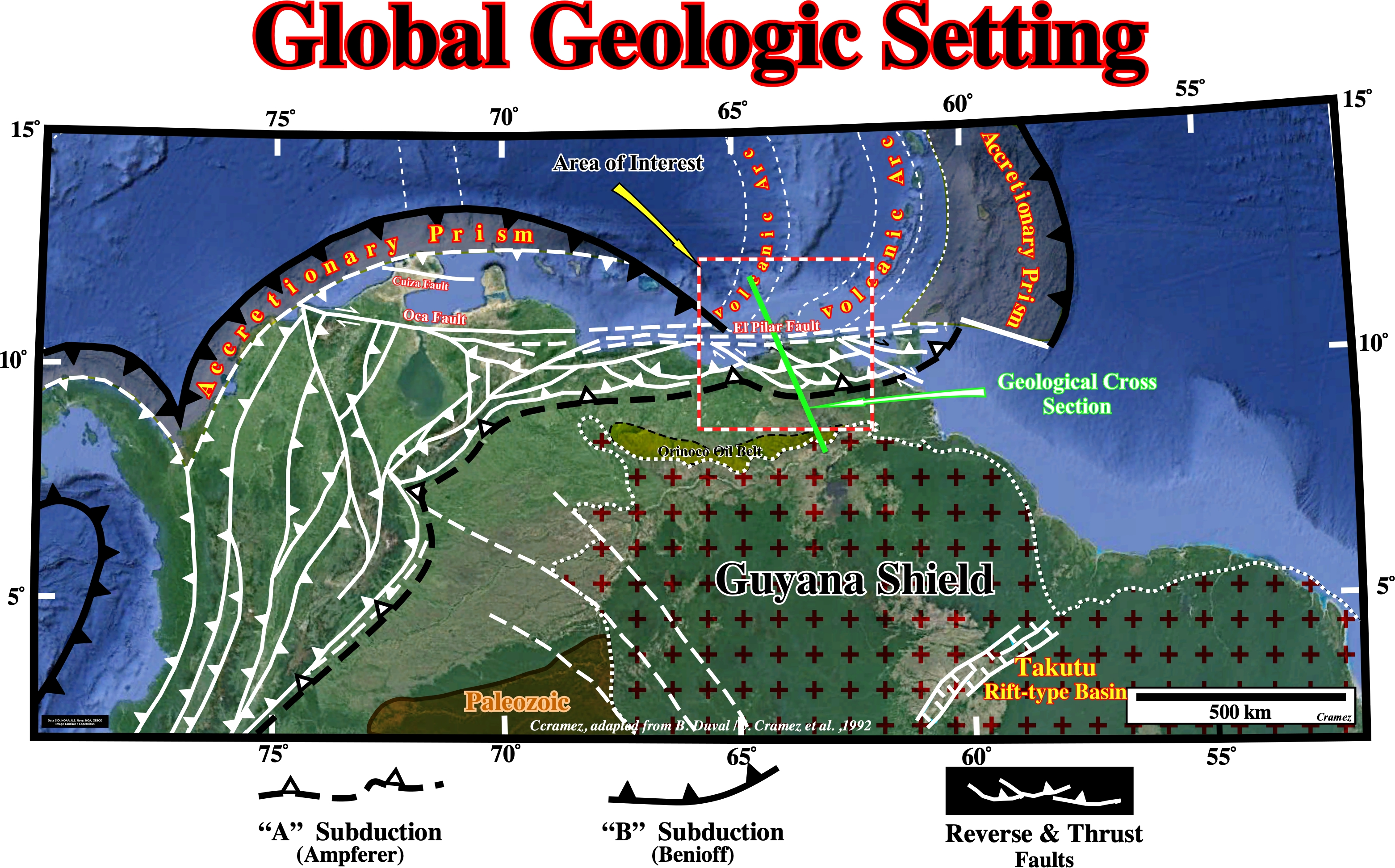
This tectonic sketch is a tentative representation of the global geological setting of the South America lithospheric plate, in which two main subduction zones are clearly visible, which bound the Meso-Cenozoic megasuture. The northern subduction zone is a B-Type subduction (Benioff type), in which the descending plate is oceanic. B-type subductions are highlighted by an: (i) Oceanic trench ; (ii) Alignment of volcanoes and (iii) Deformation in the overriding plate, which often causes the formation of mountains. The southern subduction zone is A-type subduction zone (Ampferer type), in which the descending plate is continental. A-type subduction are characterized by a foreland basin (foredeep). The area of interest (Cariaco and Margarita Platform), located westward of Trinidad, lies within the Meso-Cenozoic megasuture. It is highly shortened, as depicted on the N-S geological cross-section illustrated below.. The presence of W-E major shears, as El Pilar fault complex, creates, mainly, two types of sedimentary basins : (i) "Great Basin" Type and (ii) California-Type. The "Great Basin"-Type Basins are dominated by a complex tectonics linked to a pair of mega-shears where tilted blocks individualize a large number of small basins (e.g., Vela and Falcon geographic basins). This tilting geometry contrasts with that of Californian-type basins which are most often uniform and very flat. The Californian-type basins are similar to the continental backarc basins of Pannonian-type. Both develop over a thinned continental crust in association with normal listric faults or shears, having a strong thermal flux. In Venezuela, the Gulf of Paria and Falcon geographic basins and the Cariaco geographic basin are good examples of Californian-type basins.
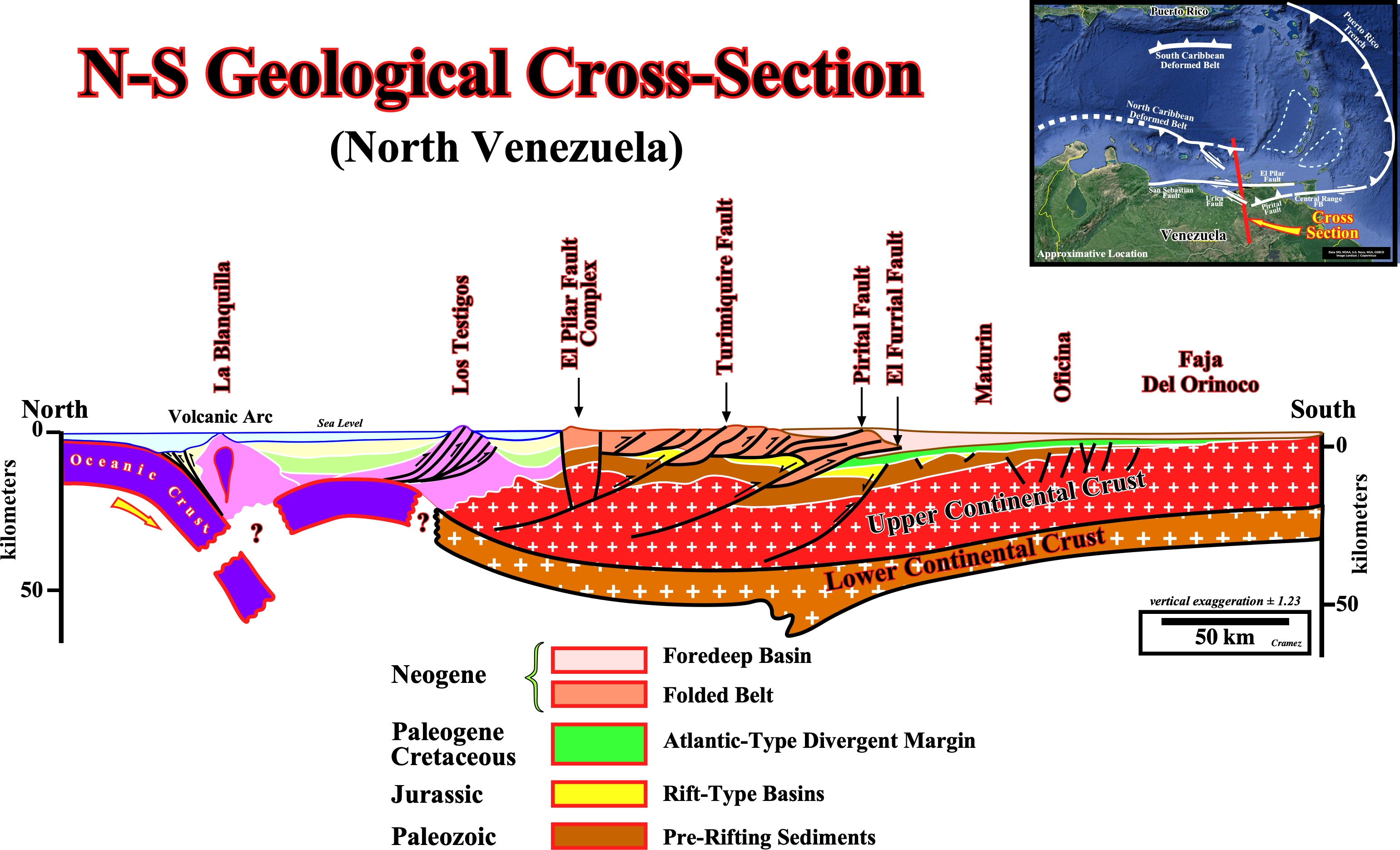
This geological cross-section highlights, over the Precambrian/ Paleozoic substratum, several sedimentary basins superposed or stacking in time and space. From bottom to top, we can recognize: (i) Jurassic rift-type basins, developed during the lengthening of the Gondwana continental crust, which presage is breakdown, and limited between the pre-rifting and the breakup unconformities ; (ii) The Atlantic-type divergent margin, which age ranges between the Cretaceous and Paleogene ; (iii) A Paleogene-Neogene foredeep basin and (iv) A Recent folded belt formed by sediments of all ages. The sediments were deformed by major shortenings. The first one, in sequence, above a decollement surface of the thrust faults, and the second by reactivation of the old Jurassic normal faults, from which the Pirital fault is a typical example. The El Furrial, under the Pirital fault, is associated with the first shortening. The Pirital fault, more recent in its actual configuration than the El Furrial fault, involves the basement is associated with the second shortening. The normal fault in the Oficina area are associated with the flexural subsidence of the foredeep basin. The strike-slip faults of the El Pilar complex seem to be rooted in reverse faults of last phase of shortening.

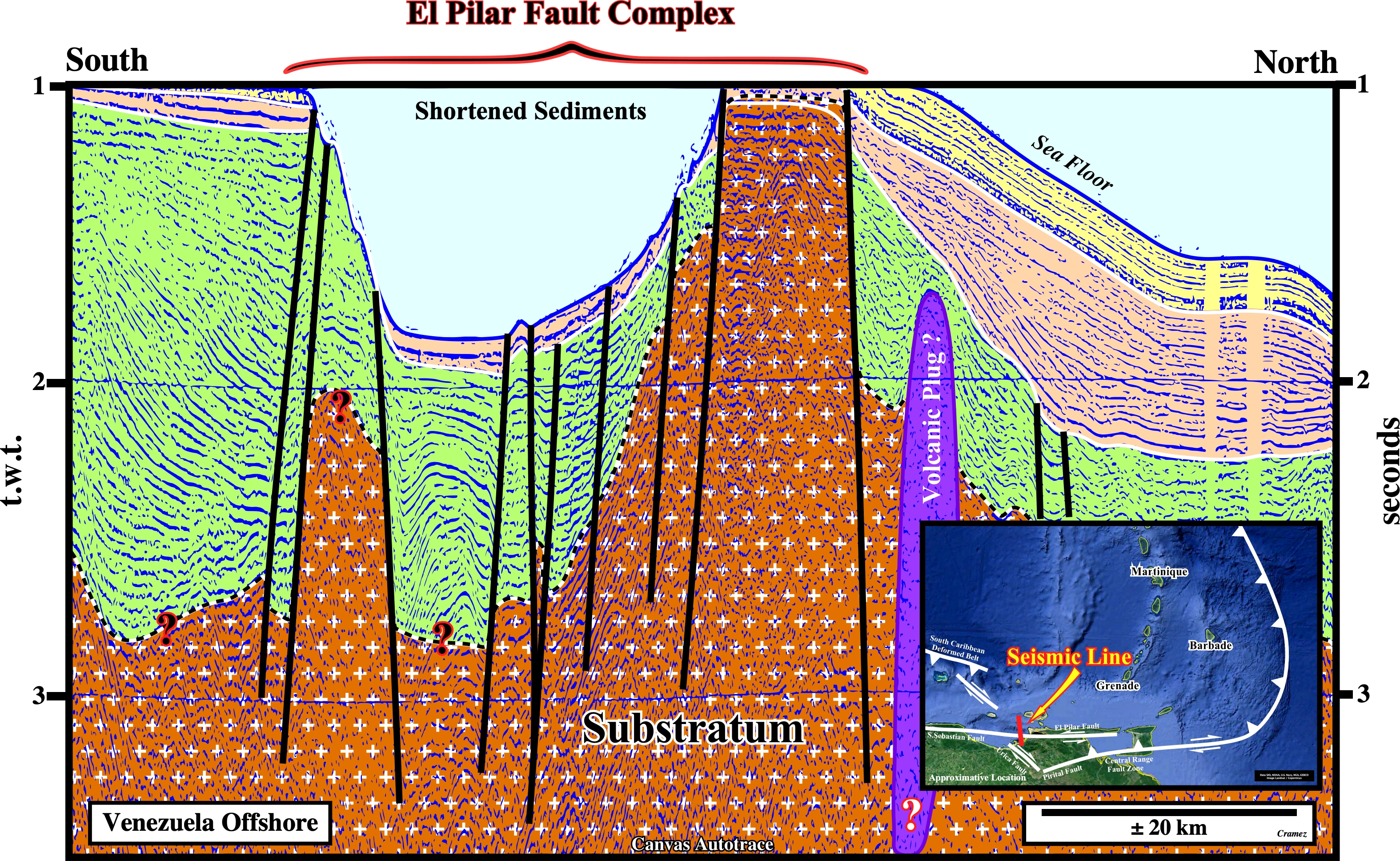
This tentative geological interpretation of a Canvas autotrace of an old seismic line of the Cariaco geographic basin is quite speculative. In fact, we do not have data enough to calibrate the majority of the seismic packages. However, the predominant tectonic regime being, here, compressional allow us to considered these sedimentary basins as Californian-type basins, what is more discernible on the next autotrace.
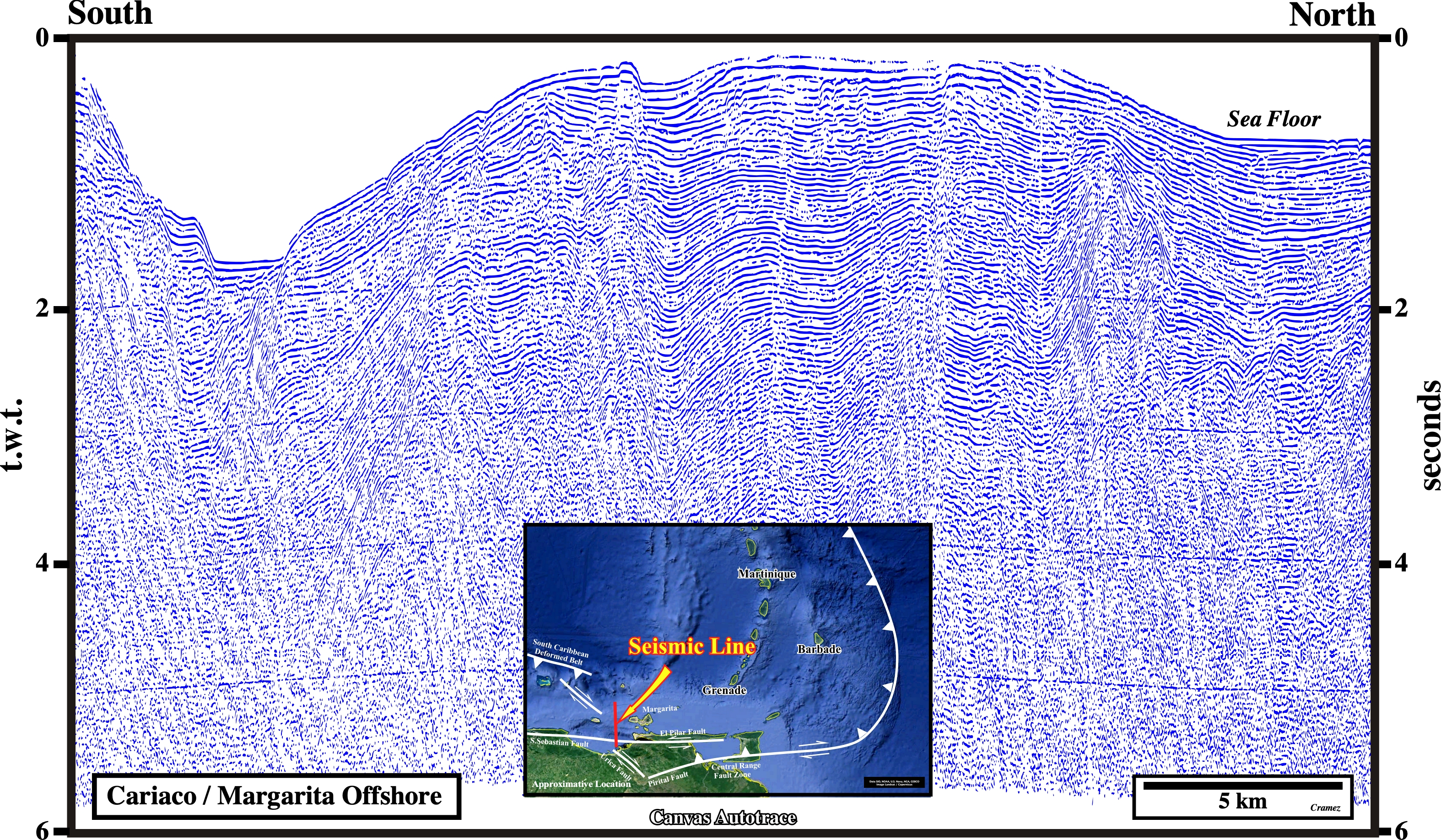
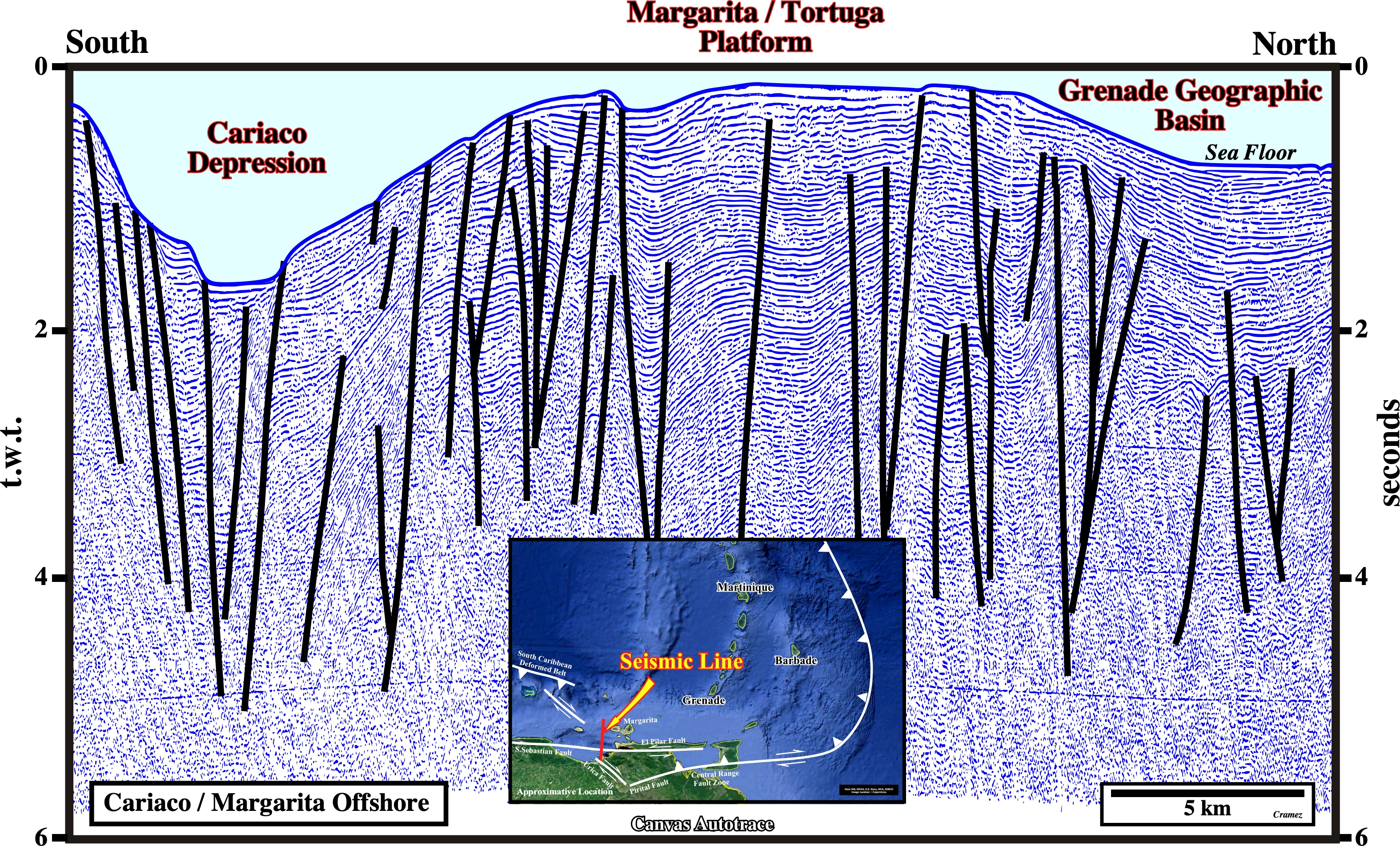
The fault system and the thickness variations of the sedimentary packages, as well as, the global geological setting of the area where the old seismic lines composing this Canvas autotrace are enough to considered the associated sedimentary basins as belonging to the Californian-type basin of the Bally and Snelson sedimentary basins classification, which develop, generally, over either an old accretionary prism or a back-arc basin.
Send E-mails to carlos.cramez@bluewin.ch with comments and suggestions to improve this atlas.
Copyright © 2001 CCramez
Last update:
2022